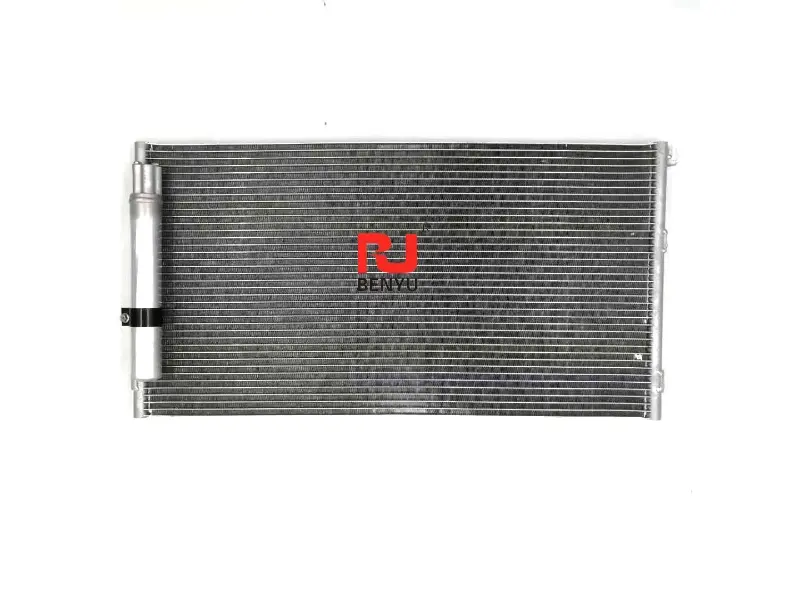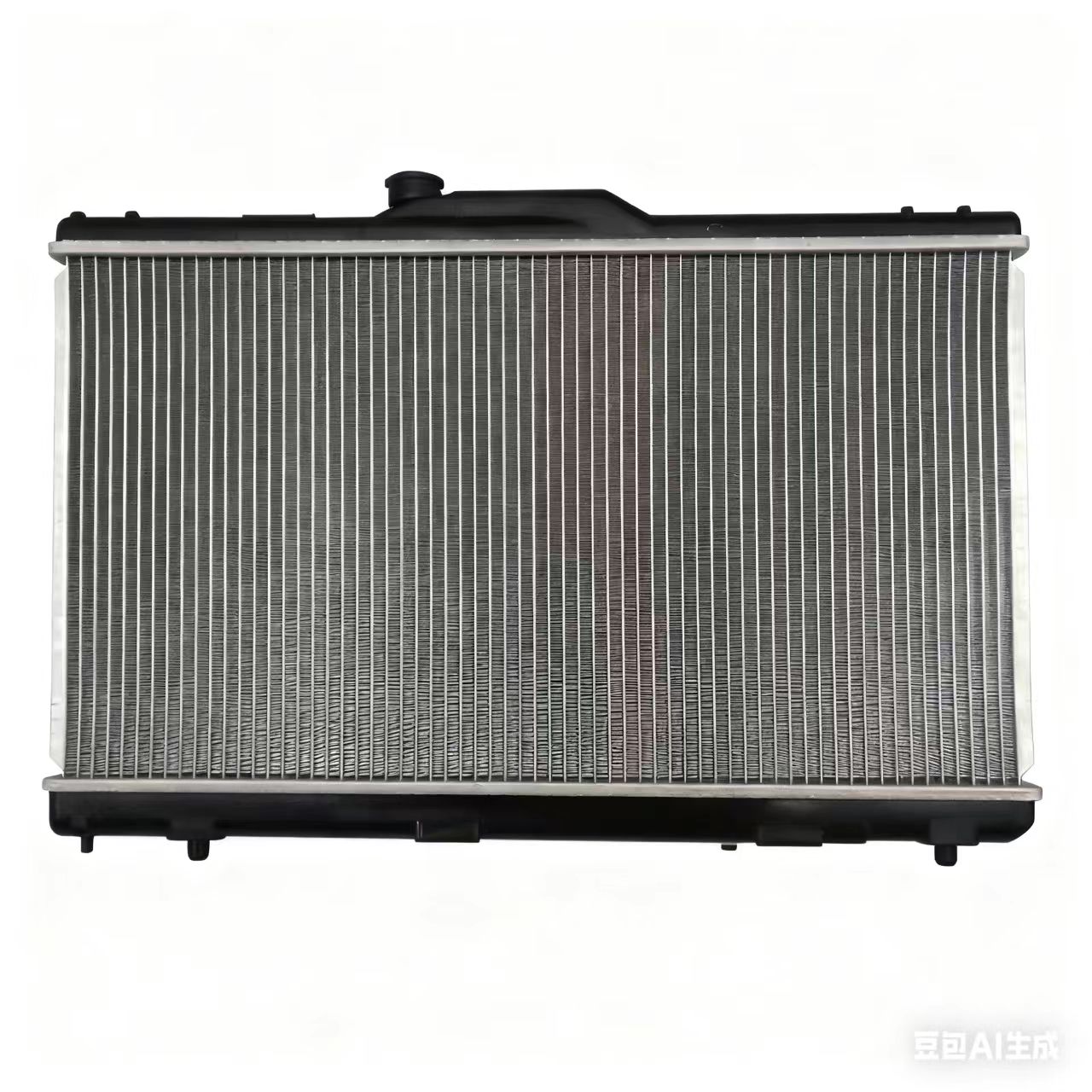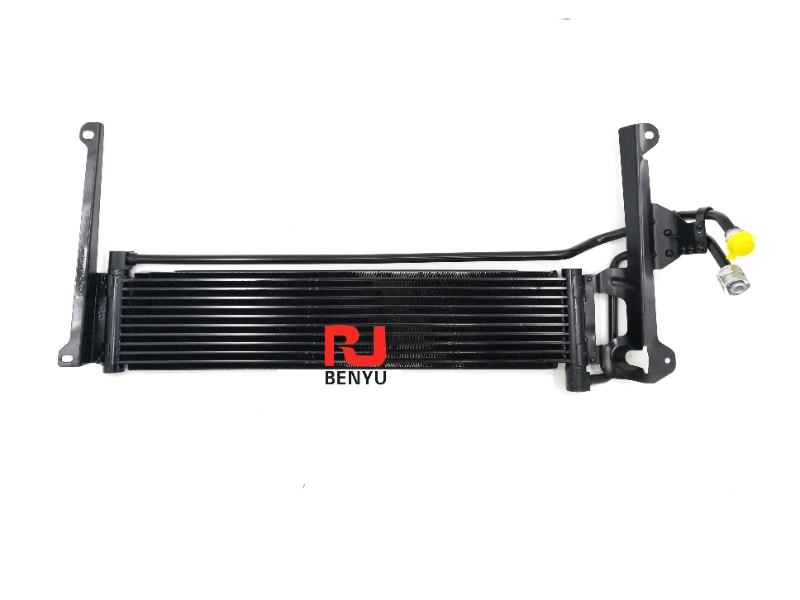Everything You Need to Know About Car AC Condensers
Release time: 2025-10-25
Table of Contents
In the hot summer months, automotive air conditioning is an essential companion for every car owner. One of the key components in the car air conditioning system is the condenser. The condenser plays a crucial role in the air conditioning system, helping maintain a comfortable temperature inside the vehicle. In this article, we will explore the working principle, main functions, common faults, and maintenance tips for automotive ac condensers.
What is an Automotive AC Condenser?
The automotive ac condenser is a heat exchange device primarily responsible for cooling the high-temperature, high-pressure gas produced by the air conditioning compressor and converting it into a liquid state. The condenser is similar to a radiator and helps transfer heat from the inside of the vehicle to the outside, ensuring a comfortable environment inside.

Working Principle of the AC Condenser
The automotive air conditioning system adjusts the temperature inside the vehicle through a series of steps, and the condenser is a critical part of this process. Here’s how the condenser works:
- Compressor Compresses the Gas: When the air conditioning system is turned on, the compressor compresses the refrigerant gas (typically Freon) into high-temperature, high-pressure gas and sends it to the condenser.
- Condenser Dissipates Heat: The condenser is located at the front of the vehicle, often alongside the radiator. It uses metal fins and tubing to allow the high-temperature gas to come into contact with outside air, gradually cooling it down.
- Gas Condenses into Liquid: As the gas cools, its temperature drops, and pressure decreases. The condenser converts the gas into low-temperature liquid refrigerant.
- Liquid Refrigerant Moves to the Evaporator: The liquid refrigerant, now cooled by the condenser, flows to the evaporator, where it continues to cool the air inside the vehicle.
Main Functions of the AC Condenser
- Heat Dissipation: The primary function of the condenser is to dissipate the heat from the refrigerant gas and convert it into a liquid state.
- Stabilizing the Air Conditioning System: By reducing the temperature of the refrigerant, the condenser ensures the air conditioning system operates efficiently, preventing overheating or excessive pressure that could damage the system.
- Improving Air Conditioning Efficiency: The condenser helps maintain high efficiency in the air conditioning system by effectively dissipating heat, ensuring continuous cooling performance, and maintaining a comfortable temperature for the driver and passengers.
Common AC Condenser Failures and Symptoms
Due to the complex working environment of the automotive air conditioning system, the condenser may experience various issues after prolonged use. Here are some common faults and their symptoms:
- Condenser Blockage: If the condenser’s tubing becomes clogged with dirt, dust, leaves, or other debris, air flow is obstructed, and the heat dissipation efficiency is reduced. This can prevent the air conditioning system from cooling the vehicle effectively.
- Symptoms: Poor air conditioning performance, high interior temperature, and overheating of the system.
- Condenser Leaks: The condenser’s surface may develop leaks due to impacts, aging, or corrosion, which can cause refrigerant leakage and affect cooling performance.
- Symptoms: Decreased cooling efficiency, refrigerant leakage causing the air conditioning to fail to start or work intermittently.
- Condenser Damage: Cracks or physical damage to the condenser’s surface can affect its heat dissipation capacity, leading to system overheating or failure.
- Symptoms: Inability of the air conditioning system to cool effectively, with possible overheat odors from the air conditioning unit.
How to Maintain and Care for the AC Condenser?
To ensure the condenser functions properly over the long term, vehicle owners should regularly perform maintenance and inspections. Here are some maintenance tips:
- Regular Cleaning of the Condenser: The condenser, located at the front of the vehicle, is prone to accumulating dust and debris. Regular cleaning of the condenser’s surface ensures smooth air flow, allowing the heat to dissipate effectively.
- Check for Leaks: Professional tools can be used to inspect the condenser for refrigerant leaks. If leaks are found, it’s essential to replace the damaged components promptly.
- Monitor Air Conditioning System Performance: Each time the air conditioning system is used, observe whether it operates normally and listen for unusual noises. If the cooling effect is poor, the condenser should be inspected.
- Avoid Collision Damage: The condenser is positioned at the front of the vehicle and is susceptible to external impacts. Avoid collisions, especially at low speeds, to prevent physical damage to the condenser.
The automotive air conditioning condenser is an indispensable part of the air conditioning system, helping to cool high-temperature refrigerant gas and convert it into liquid, ensuring a comfortable vehicle interior. Regular maintenance, timely identification, and resolution of any issues can effectively extend the lifespan of the air conditioning system and improve its cooling performance. As a car owner, understanding the working principle and common issues of the condenser will help you better protect the air conditioning system and enjoy a more comfortable driving experience.
If you need more technical support or condenser replacement services for your automotive air conditioning system, feel free to contact BENWOO. We are committed to providing you with the best products and services.
The cooling system components we offer include:
BENWOO specializes in the production of automotive parts, including radiators, condensers, heaters, intercoolers, and oil coolers. Our product line covers over 4,800 models for Japanese, Korean, European, American, and Chinese models. We offer high-quality, competitively priced, and comprehensive product lines. We primarily export our products and are actively expanding into the international market.


